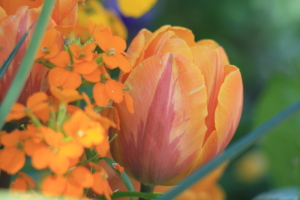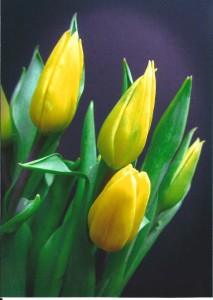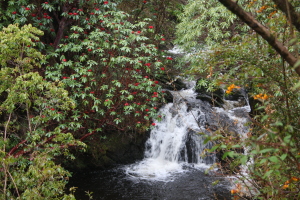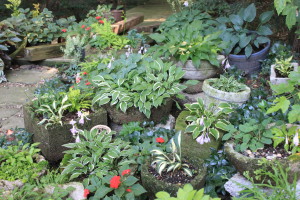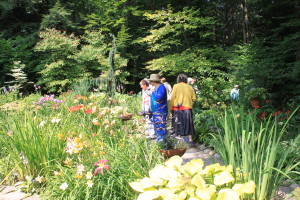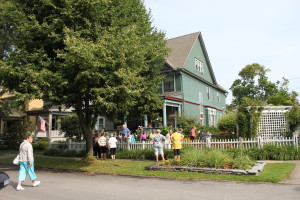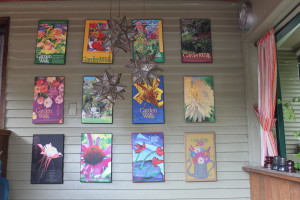Create your own family-friendly Christmas containers
It’s Still Just Dirt, Tillsonburg News – December 2014
by Penny Esseltine
Tillsonburg Garden Gate’s Matthew and Thea Fenn brought Christmas greenery and arrangement ideas to the Tillsonburg Horticultural Society recently. We are very near to Christmas. If you haven’t already you might want to try your hand at some original outdoor decor that will last well into spring.
You can create your arrangement right in an urn or pot or use an insert that you can drop into a larger container. The soil from fall plants that’s already in the pot can hold your arrangement or you can use a block of oasis. Matt also suggests that sand works well because it’s especially firm once frozen.
“Filler, spiller, thriller and chiller,” are the components of a winter container arrangement Matt says.
For thriller you can start with red twig dogwood or white birch. These stand tall and stay upright. Red twig dogwood gets redder as the temperature falls. You could also use artificial red, lime green, or silver branches, or white or gold twigs. “New this year are battery operated lighted branches,” Matt says. You could use these as well in your urn.
White pine, spruce, yew, boxwood, and holly make good filler. Fraser fir has a nice blue tinge. British Columbia cedar has a nice droopy look and is good for spiller. Matt says the more layers of greenery you have the better your container will look.
“Chiller,” Matt says, “can be things you have in the garden that have hardened off after the frost.” Think about blossom heads on hydrangea stems. You can use these in your arrangements too.
Matt says things look good in odd numbers like three or five. You could use three white birch branches, all of the same length or in different lengths.
You can make your Christmas container arrangements look good on just one side or all the way around depending on where you are going to place them. For all-around containers keep spinning the container as you add pieces so that it will look even and full.
For seasonal decor choose things like large silver balls, gift-wrapped presents on a stick, a top hat, or artificial apples. Pine cones and bird nests will give a more natural look. “The big colour for Christmas this year is blue,” Matt says.
Bows can be important. Use 20 gauge floral wire wrapped in green floral tape to gather ribbon loops into a bow. As well Matt suggests using Geo Mesh ribbon. “It’s made of a fabric that is really bright and has a good show factor. It’s easy to use too. Take about one and a half feet of the material to make a loop on a stick and insert it in your arrangement.” At the museum this past week staff from XQZT Flowers were working with crafters to construct geo mesh wreaths.
If you’re thinking it’s a little late in the season to be putting together Christmas urns I’d suggest it’s a great family friendly, pre-Christmas activity. Collect branches and greenery by trimming the trees and bushes in your yard, or in open areas that you have access to. A winter adventure for sure. Of course greenery is also available at area garden centres.
It can be equally pleasing to create indoor arrangements and table centrepieces using oasis in a bowl or dish as your base and again natural elements from outside. Be sure to add fresh flowers too. Water-laden oasis will keep everything fresh.
Matt says, “To get good value from your outdoor Christmas containers, simply take out the Christmas decor pieces after the New Year and leave the greenery through until spring.” Merry Christmas!
The Tillsonburg Horticultural Society’s first meeting of 2015 is set for Tuesday, January 6 at 7:30 p.m. in the Senior Centre Auditorium at the Tillsonburg Community Centre. Jay Campbell, former star meteorologist with London’s CFPL TV, talks about weather including our latest climatic outlook. Everyone is welcome.
